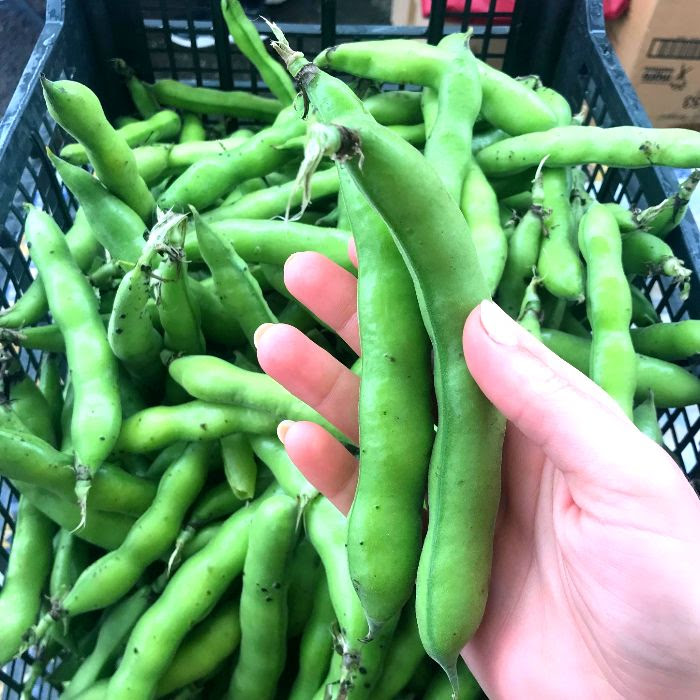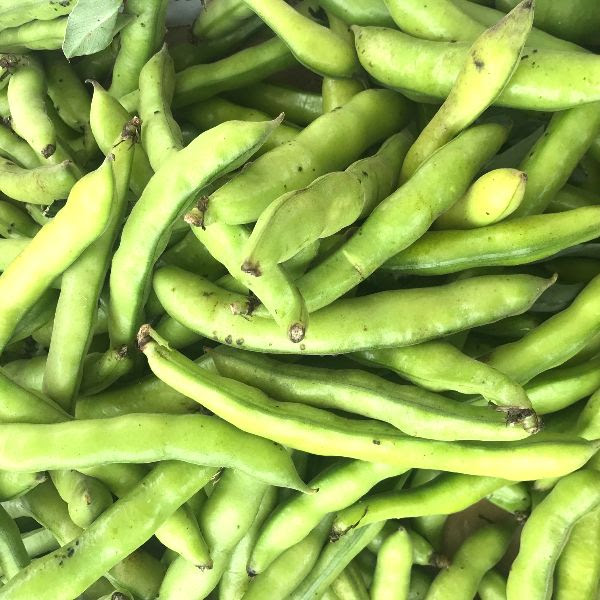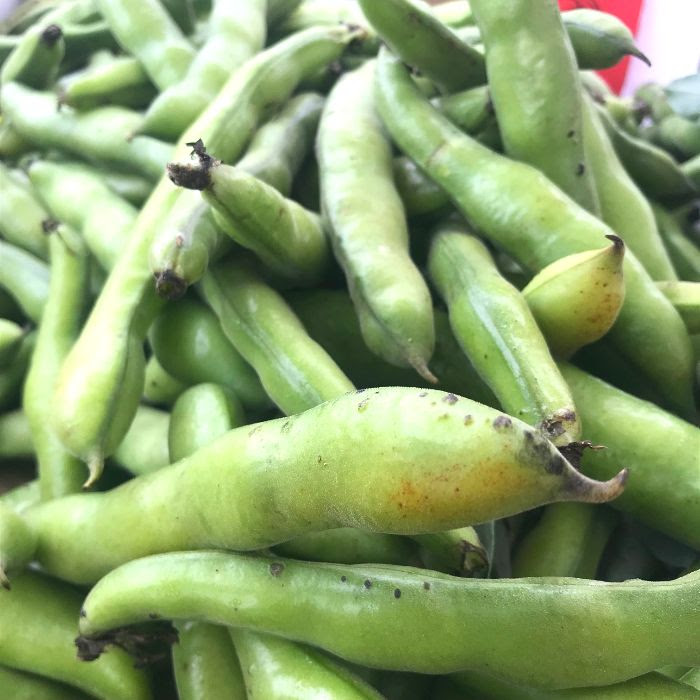Also know as broad beans, the fava bean is a brightly colored green legume. Their nutty, buttery flavor and tender, creamy texture makes them well worth the little extra preparation they require!
Because fava beans are good at fixing nitrogen in the soil, farmers often use them as a cover crop (a crop planted to replenish soil nutrients, increase fertility, and manage pests and weeds) to rotate in between plantings of other crops, particularly during the winter. They appear at the market in mid spring and usually stick around to late spring.
When buying fresh fava beans, seek out young, tender beans with bright green pods. They bring a rich texture and flavor to dips, salads, soups, and more, so keep reading to get the skinny on how to properly prepare these broad beans, then get to the market on Saturday to pick up a fresh batch!
- fava4
- fava3
- fava2
How to Prepare Fava Beans
Since each bean comes wrapped in a thick outer skin, and the whole bundle is wrapped in a pod, fava beans require a bit of prep. Here’s how to tackle your bounty.
Open Up
If beans are very young and fresh, you don’t have to remove the inner skins. Most fava beans in the US do need to be peeled, though. Buy one pound of fava bean pods for every cup of peeled beans you want. To release the beans, break open each pod by tearing off the end and pulling the string-like seam down. Slide your finger along the seam to open the pod. If that doesn’t work, you can also try twisting the pod and using your thumb to open it.
Give ‘Em a Hot Bath
Once all the beans are out of their pods, bring a pot of salted water to a boil. Drop the beans into the water and cook for one minute to blanch them.
Shock ‘Em
After one minute is up, drain the beans and shock them in a bowl of ice water until cool. This stops the cooking process, keeping them perfectly tender and bright green.
Squeeze ‘Em
Remove the thick skin that surrounds each bean by squeezing it and using your thumbnail to break open the skin and push the bean out. If you’re not going to be using the skinned beans immediately, store them in the freezer in an airtight container to keep them green. Storing them in the freezer is also a great way to preserve them to enjoy when spring is long gone.
Eat ‘Em!
At their peak, fava beans should be eaten simply, but they’re also pretty great mashed and spread on crostini, tossed in pasta, mixed in a salad, or simmered in a spring soup.



